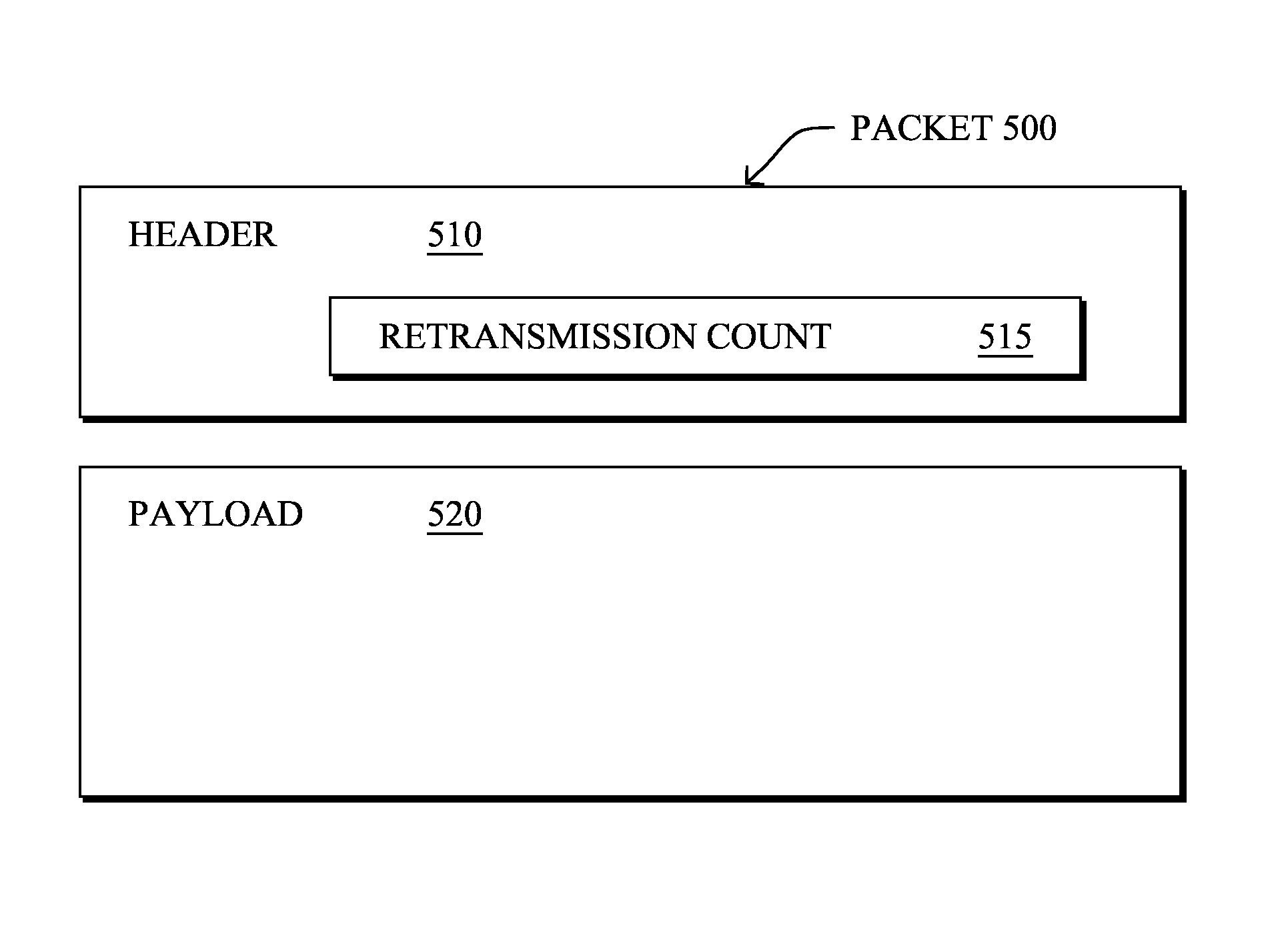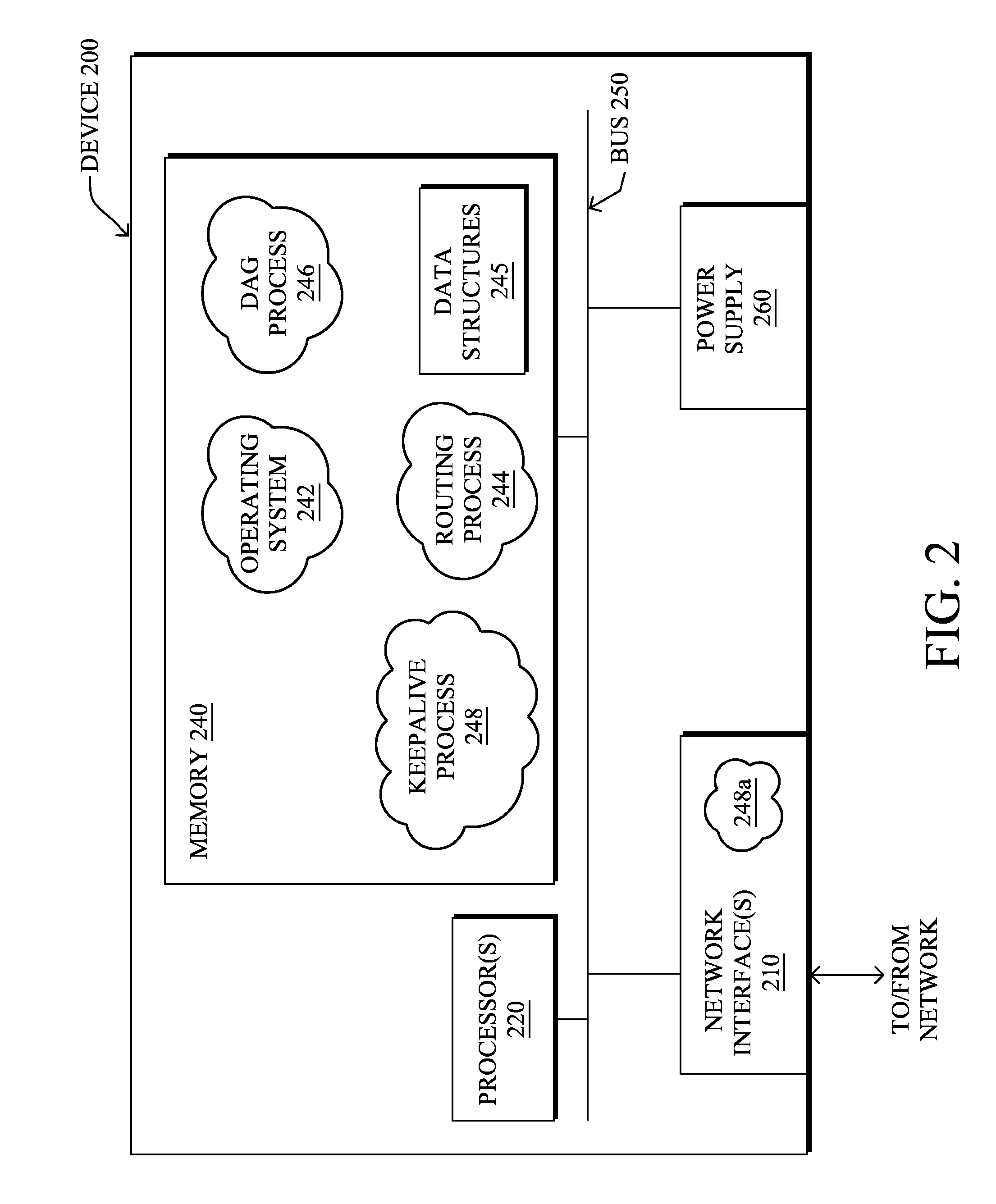Dynamic keepalive parameters for reverse path validation in computer networks
a technology of reverse path validation and keepalive parameters, applied in the field of computer network path validation, can solve the problems of root continuing to send traffic down an invalid path, reactive detection of link failures,
- Summary
- Abstract
- Description
- Claims
- Application Information
AI Technical Summary
Benefits of technology
Problems solved by technology
Method used
Image
Examples
Embodiment Construction
Overview
[0015]According to one or more embodiments of the disclosure, a network device determines a path from itself to a source device in a computer network, where the source device utilizes the path in reverse to reach the network device. Based on determining a reliability of the path in reverse, the network device may dynamically adjust one or more keepalive parameters for keepalive messages sent on the path. Accordingly, the network device may then send keepalive messages on the path based on the dynamically adjusted keepalive parameters.
DESCRIPTION
[0016]A computer network is a geographically distributed collection of nodes interconnected by communication links and segments for transporting data between end nodes, such as personal computers and workstations, or other devices, such as sensors, etc. Many types of networks are available, ranging from local area networks (LANs) to wide area networks (WANs). LANs typically connect the nodes over dedicated private communications links...
PUM
 Login to View More
Login to View More Abstract
Description
Claims
Application Information
 Login to View More
Login to View More - R&D
- Intellectual Property
- Life Sciences
- Materials
- Tech Scout
- Unparalleled Data Quality
- Higher Quality Content
- 60% Fewer Hallucinations
Browse by: Latest US Patents, China's latest patents, Technical Efficacy Thesaurus, Application Domain, Technology Topic, Popular Technical Reports.
© 2025 PatSnap. All rights reserved.Legal|Privacy policy|Modern Slavery Act Transparency Statement|Sitemap|About US| Contact US: help@patsnap.com



